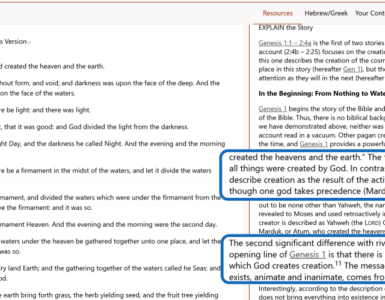
This is the ninety-sixth lesson in author and pastor Mel Lawrenz’ How to Live the Bible series. If you know someone or a group who would like to follow along on this journey through Scripture, they can get more info and sign up to receive these essays via email here.
See Mel Lawrenz’s book, How to Understand the Bible.
The church has failed so often in so many ways, which was probably inevitable because it is built with the flawed material of humanity. We traded the righteousness of God for our tinny self-righteousness. We are satisfied with a club when it should be a community. We’ve used the church to build walls instead of open doors. We sink to inter-tribal warfare between churches instead of marveling at the one place in the world—really, the only place in the world—where we can see “every tribe, language, people, and nation” flourish together.

We have often thought of the church as the place to settle in, rather than an army ready to march. Instead of serving as a community where deep spiritual healing can occur, the church often becomes a dangerous place where sharp edges and projectiles injure and wound. The church should lead the way as the high-water mark of intellectual inquiry, but we are satisfied with blunt-edged simplicity. The church should prove itself as the most creative community in society, but we often think the blander the better.
Yet… God is building a church. No matter how hard we work against it, God is intent on staying with the original plan. Jesus said, “I will build my church.” So who will argue? The apostle Paul, in the passage quoted above, said, “You are being built together.”
Jesus is laid down as the chief cornerstone, the fixed reference point for every stone that will be laid down.
I built a retaining wall in our backyard 15 years ago, and I’m amazed to say that it still stands. For all the flaws in the way I built that wall, there was one piece of advice someone gave me before I ever started that I did follow: make sure the first block is put in exactly the right place, perfectly level. I did that, spending an inordinate amount of time getting that one block laid. That cornerstone became the reference point, and the rest of the stones knew exactly where they needed to line up.
There is our hope. Jesus the cornerstone, then God’s own hand in taking our rough-edged lives that are the living stones he skillfully puts together. And it rises. Not necessarily more impressive than other human organizations from a human point of view. But it rises above any other ambition any other architect has imagined. The purpose of the church is to be a community where God dwells.
Skeptics and enemies will ask, Can they bring stones back to life from rubble? Believing Christians themselves may wonder, Is this thing really going to work? But the wise person asks, If God states he’s going to do something, who am I to doubt? I’d rather throw my life into something God intends to build than stand outside and debate whether it’s possible or not.
When I think about all the lofty descriptions of the church in the New Testament, and then go into my office at Elmbrook Church day by day, I find myself continually comparing the reality to the principle. Is the church really that sanctuary, that spiritual house that Peter and Paul talk about? Do people actually find healing and protection there? Is the church something we can be proud of, as the Israelites were proud of the spectacular temple Solomon built and where the smoke of offerings wafted across the valley below?
The truth is that we have good days and bad days—just as it was at the temple, just as it is in anyone’s marriage. The temple was an ideal, but there was a lot of nonsense that went on in its courtyards: proud priests, superstitious worshipers, money-changers who saw nothing but the commercial activity. But despite the flaws, the ideal is not compromised, and God keeps doing mighty deeds through the fellowship of believers.
That’s the way I must think about the church and the particular congregation where I worship and serve. Christ has said, this is my bride. So who will dare step forward and insult Christ by saying that she’ll never amount to anything? Dare anyone ask: “Have you taken a really good look at her, Jesus? You know, a groom only knows what he’s really gotten into when he shuts the door behind him”?
So I regularly remind the people in our church that we are a flawed place. A place where at some point you will probably be disappointed or misunderstood or unappreciated. But unless the church looks honestly at what it is and what it isn’t, unless it can state and hold to reality, what good is it to say that this is a place to find the truth?
___________
[If you believe this series will be helpful, this is the perfect time to forward this to a friend, a group, or a congregation, and tell them they too may sign up for the weekly emails here]
Mel Lawrenz (@MelLawrenz) trains an international network of Christian leaders, ministry pioneers, and thought-leaders. He served as senior pastor of Elmbrook Church in Brookfield, Wisconsin, for ten years and now serves as Elmbrook’s teaching pastor. He has a PhD in the history of Christian thought and is on the adjunct faculty of Trinity International University. Mel is the author of 18 books, including How to Understand the Bible—A Simple Guide and Spiritual Influence: the Hidden Power Behind Leadership (Zondervan, 2012). See more of Mel’s writing at WordWay.
The post How to Live the Bible — What God Is Building appeared first on Bible Gateway Blog.











